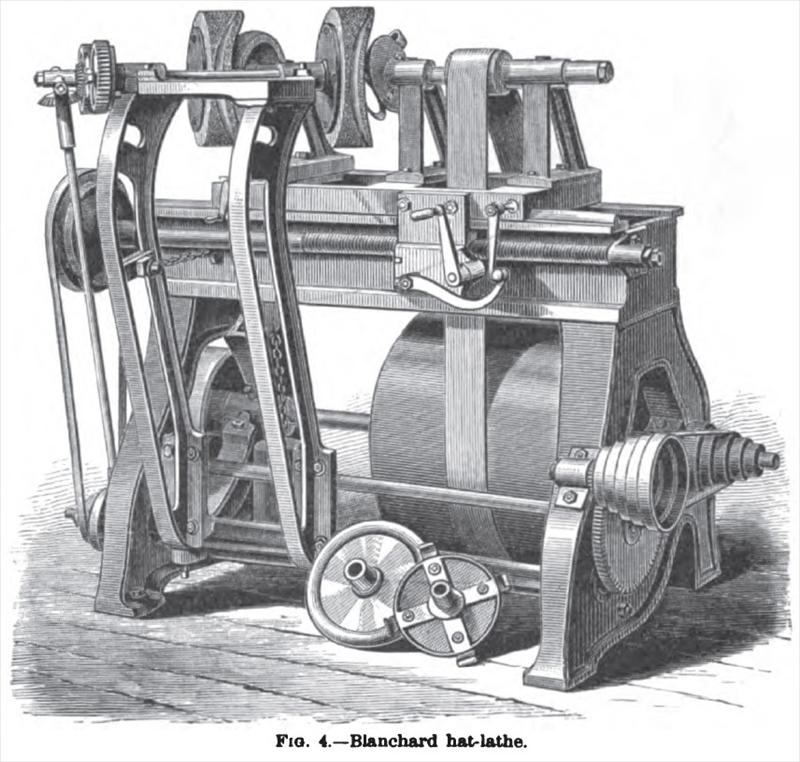|
Title: |
1895 Article-Osterheld & Eickemeyer, Blanchard Hat Lathe |
|
Source: |
Modern Mechanism 1895 pg 439 |
|
Insert Date: |
6/16/2011 9:45:41 PM |
|
The Blanchard Lathe in Hat-Making.—Many attempts have been made to improve the Blanchard machine so as to enable it to make flanges with scooped faces. It is claimed that the machine illustrated in Pig. 4 is the first in which this object has been successfully accomplished. It will finish a hat-block from the edge of the band to the center of the tip, and it will cut out a flange flat or scooped ready to saw out the hole in the center, and will make any size of block or flange from a given pattern. In the machines heretofore used to make blocks, the pattern as well as the wood was held between centers, and it was impossible to work to the tip of the block. This made it necessary to finish every block made on the machine on a wood-lathe or by hand. Another point in the old machine was the adjustment of the machine to vary the sizes and heights of the hat-block to be used. Both of these points have, in this machine, been corrected. The hat-block is worked over by the cutter from the edge of the band to the center of the tips, and is ready for sand-papering when taken out of the machine. Only one adjustment is required to regulate the size and depth of a hat-block. In Fig. 4 the machine is shown as in use making a flange. The flange on the left of the machine represents the pattern, while the other represents the flange as turned by the machine. The pattern is secured upon an oval plate screwed upon the pattern-spindle, and the block of wood on a similar flange on the working-spindle; the saddle upon which the cutting-spindle and pattern-wheel are secured is now shifted to the left until the wheel touches the edge of the pattern. When the machine is started the pattern-wheel will cause the frame upon which the pattern and working spindle are supported to swing to and from the cutters, and an accurate copy of the pattern is made, the size of the copy depending on the adjustment of the pattern-wheel. Any style of flange or block can be made without other change than the substitution of one pattern-wheel or cutter for another. In Fig. 4 the pattern-wheel and cutter intended for such a block are shown as resting on the base of the machine. All the foregoing machines are from designs by and are patented to Mr. Rudolph Eickemeyer. of Yonkers, N. Y. |
|
 1895 Osterheld & Eickemeyer, Blanchard Hat Lathe
1895 Osterheld & Eickemeyer, Blanchard Hat Lathe
|
|